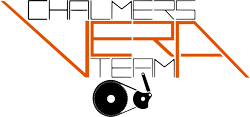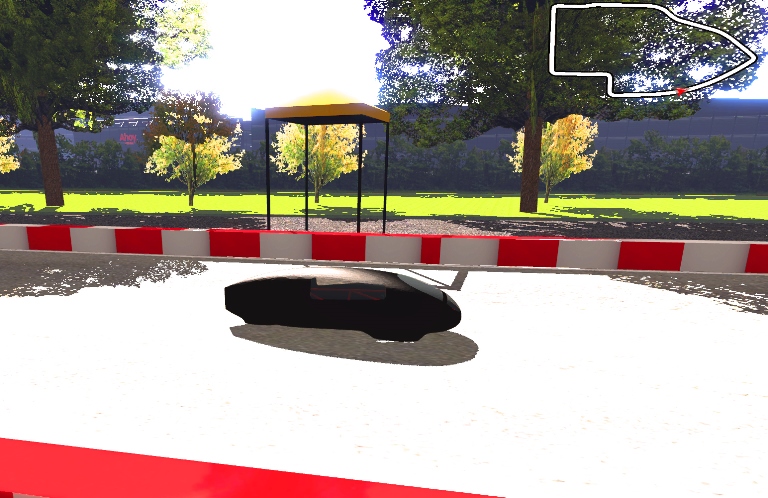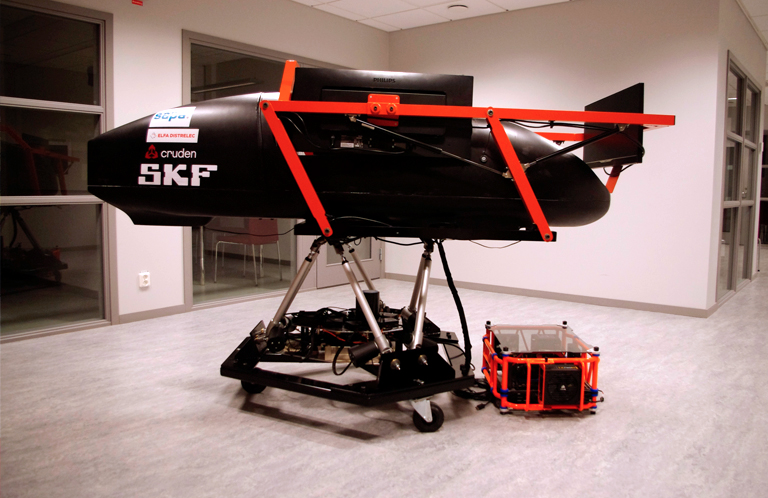Racing disciplines such as Formula 1 heavily relies on excessive amounts of testing. Simulators have therefore existed in this sector for a long time and are now making an entrance in the automotive industry; however, mainly for performance purposes. They are a great tool when testing different configurations and allows for instant feedback from the driver; a source of knowledge incomparable to any other data output.
By utilizing technology used in simulators to optimize fuel efficiency this project aids Chalmers Vera Team in their work to achieve the most fuel efficient vehicle possible. This will act as a complement to their already advanced technology and offer the ability to develop and practice new driving strategies. It will also be a valuable tool when developing future vehicles, since it enables early testing of important parameters.
Creating a realistic environment requires visual and physical authenticity. By covering the windows of the vehicle with monitors the driver is visually immersed on a virtual track. Leaning the driver, vehicle and monitors then recreates the forces experienced when turning. The latter part is achieved by placing six linear actuators in a configuration known as a Stewart platform. This allows for translation and rotation along all three axis based on real-time data provided by the simulation software. Apart from supplying information about forces acting on the virtual vehicle the software also renders the virtual environment.
Five students from Chalmers with competences ranging from programming to manufacturing attained the challenge of designing the simulator during the spring of 2014. By utilizing tight communication with the team and close collaboration with industrial partners, a simulator with focus on authenticity and immersion has taken shape. It has been designed and built by the project group with inspiration from scientific articles and reports. This includes adapting the software to control the simulator and suit the graphical needs.
Interfaces and documentation have been designed to allow for use and further development by Chalmers Vera Team and in related education. This will ensure that engineering students at Chalmers University of Technology have a platform for further development towards a sustainable future.


